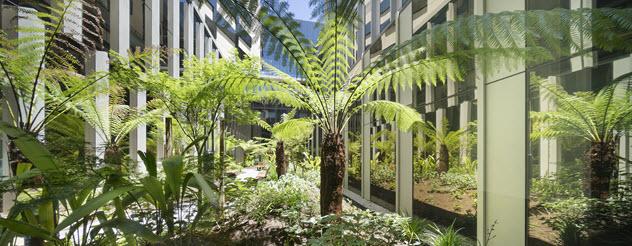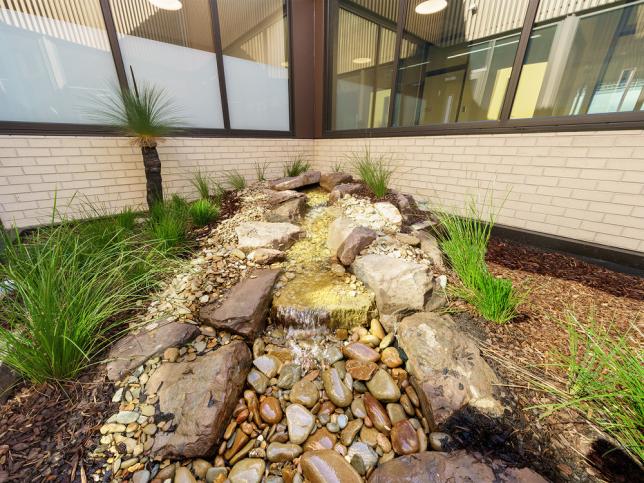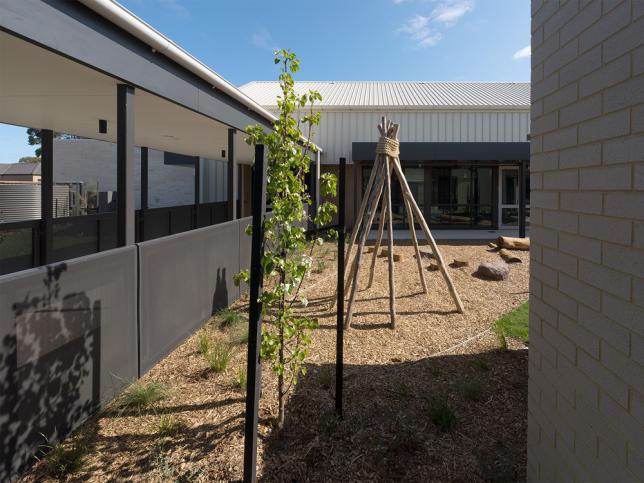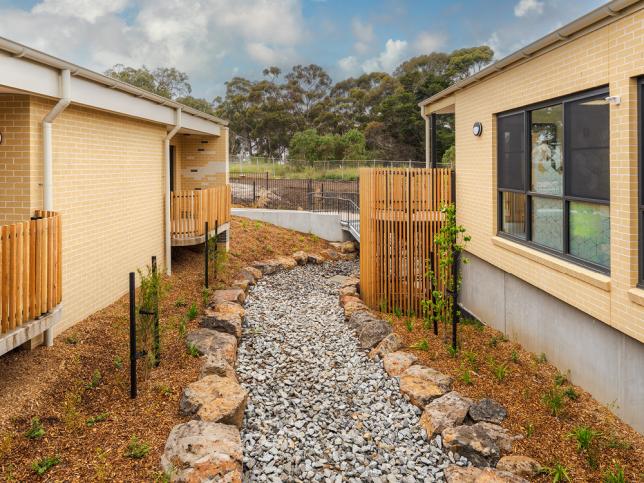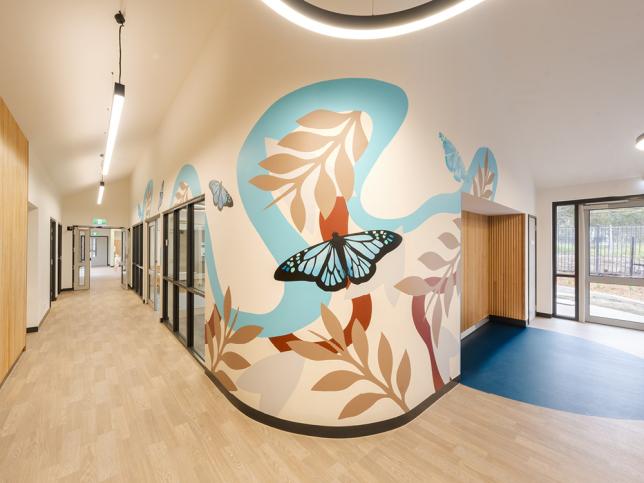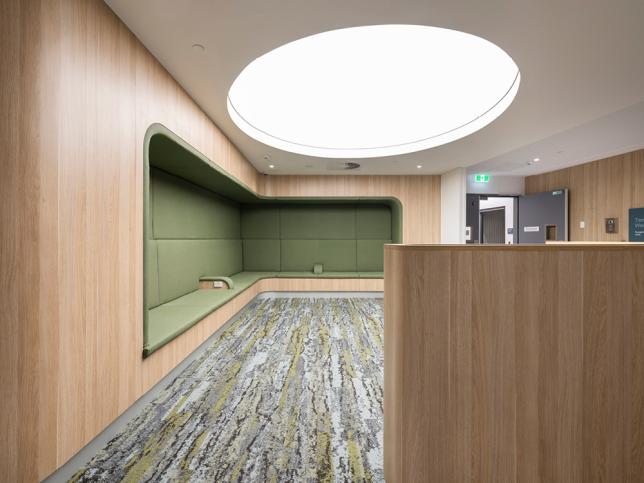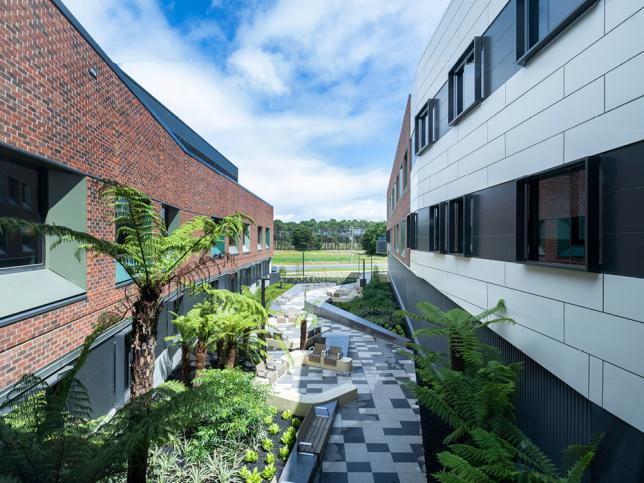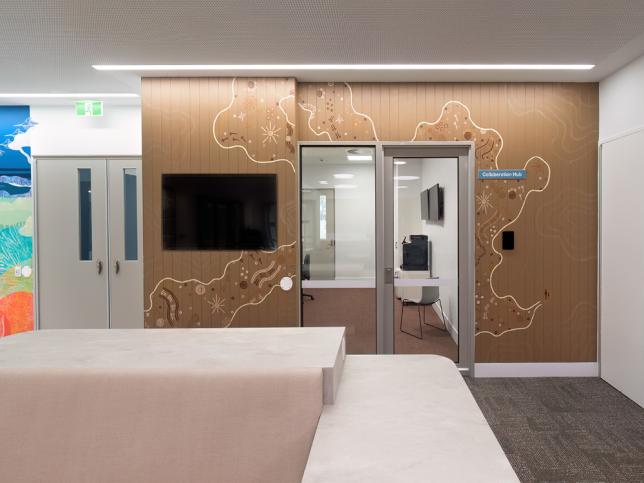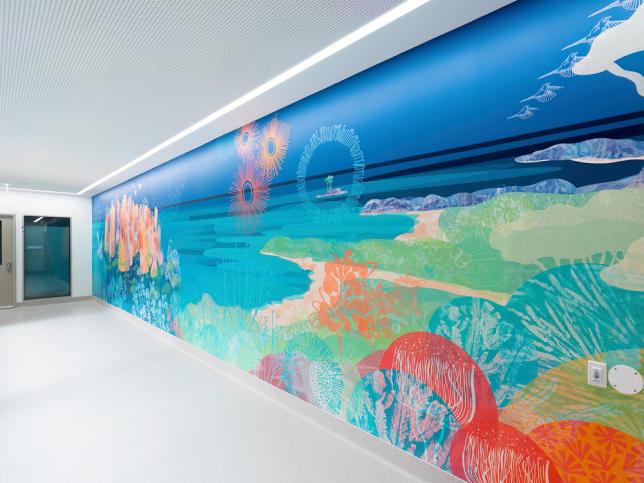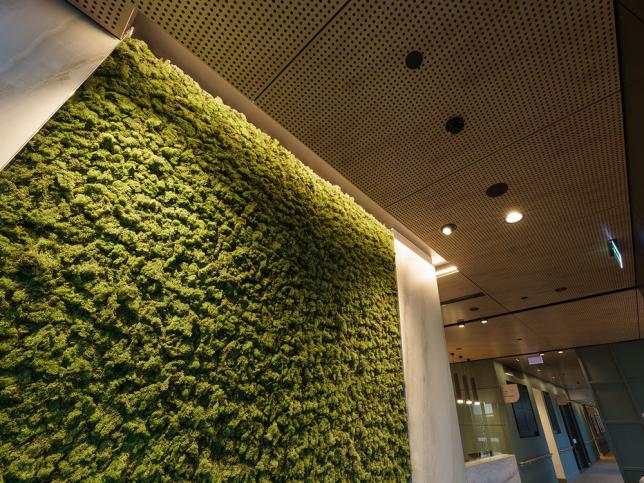Mental health benefits
Research shows that exposure to nature indoors, like sunlight, fresh air and greenery, can have a profound impact on our psychological state.
Well-designed spaces can improve patient recovery times, improve morale and even reduce staff turnover.
In response to the Royal Commission on Aged Care and Mental Health, the Australian Government has developed the draft National Aged Care Design Principles and Guidelines. These guidelines aim to improve the design of aged care facilities, with recommendations that include:
- designing windows and balconies that help residents connect with nature
- providing fish tanks, bird cages and other pets in common areas
- adding safe houseplants to the common areas and resident bedrooms.
Environmental benefits
The benefits of biophilic design aren't limited to promoting wellbeing, as there are considerable environmental benefits too.
Adding greenery reduces carbon emissions. When native species are planted, green facades can increase the biodiversity of the surrounding area.
Biophilic design can also help to reduce a building's energy consumption. Sunlight and natural airflows can be used as alternatives to artificial lighting, helping the building to maintain comfortable temperatures.
Biophilic design in practice
McKellar Mental Health and Wellbeing Unit
The McKellar Mental Health and Wellbeing Unit in Geelong was delivered as part of the Victorian Government's Mental Health Beds Expansion Program.
It was the first mental health facility designed to follow recommendations of the Royal Commission into Victoria's Mental Health System.
The 16-bed unit, operated by Barwon Health, provides care for people aged 50+ experiencing mental illness.
Light-filled and directly connected with nature, the unit was co-designed with consumers, carers, providers and design experts. Barwon Health collaborated with Deakin University on the project via the Change to Improve Mental Health (CHIME) partnership, engaging Associate Professor Phillip Roös to enhance the new facility using biophilic design.
